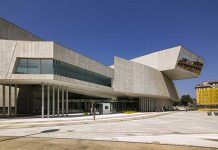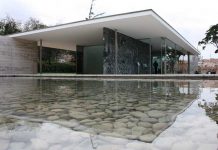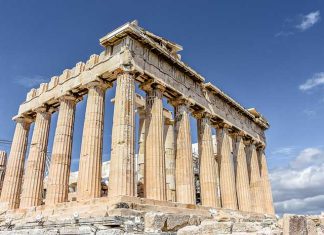
Construction of Bilbao Guggenheim Museum started in 1993 and completed in 1997. The museum has an important place in architectural history because of its outstanding architecture and transformative effect on Bilbao. Since its opening, the museum contributes a lot both economically and socially to the city of Bilbao. It is one of the international museums of the Guggenheim Foundation.
The Guggenheim Foundation
The Solomon R. Guggenheim Foundation was established in 1937. The foundation works for increasing understanding and appreciation of modern and contemporary art. It organizes various exhibitions, workshops, and research programs to support art. Frank Llyod Wright’s Guggenheim New York, Guggenheim Bilbao Museum, Peggy Guggenheim Collection and Guggenheim Abu Dhabi are the parts of the foundation’s international museum constellation.
Architect of Bilbao Guggenheim: Frank Gehry
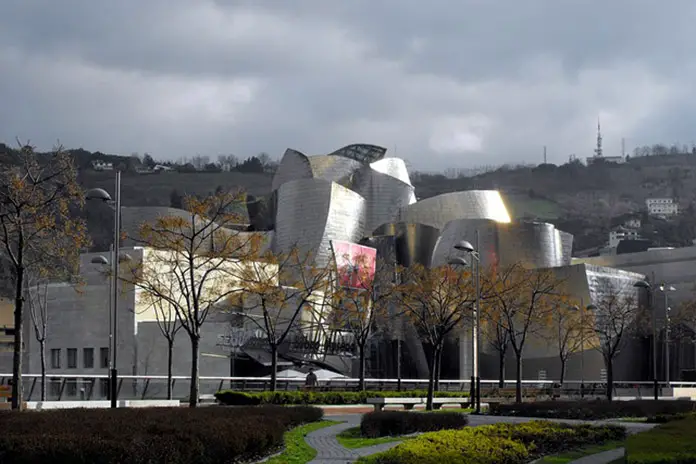
Guggenheim Museum in Bilbao was designed by Frank Gehry, who is one of the exponents of the deconstructivism movement in architecture. Pritzker Prize-winning architect is known for his sculpture-like structures that are combinations of architecture and art. Walt Disney Concert Hall, Vitra Design Museum, Weisman Art Museum, and Dancing House in Prague are a few of his famous works. Furthermore, the Guggenheim Abu Dhabi Museum, which is under construction, was designed by Frank Gehry.
Architecture of Guggenheim Museum Bilbao
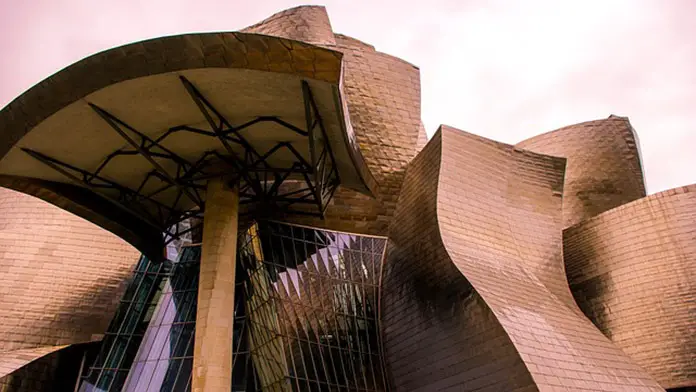
Guggenheim Museum of Bilbao is accepted as one of the iconic buildings of the 20th century. In terms of both Gehry’s extraordinary design and the modern engineering techniques used in its construction, the building was revolutionary for that period. While designing this building, Frank Gehry brought different forms and materials together. Limestone and titanium are used for the building’s exterior. Titanium was chosen for both its durability in the climate and color shifting under the sunlight. Especially at sunset, the light reflected from the titanium tiles creates a visual beauty.
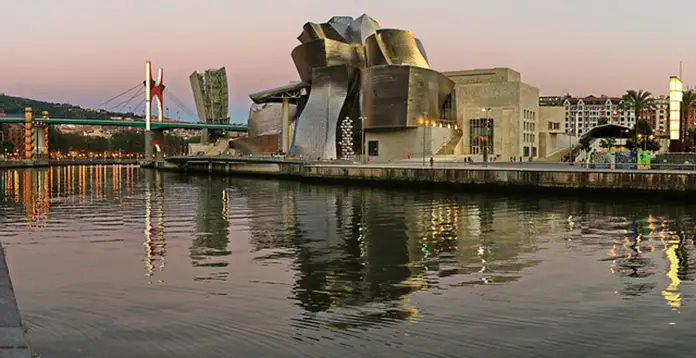
Even though the museum’s unusual form could be incompatible in the city, it is designed harmoniously with its environment. Gehry considered the relationship between the museum and the other structures in the surrounding area. For example, the tower of the museum unites with the La Salve Bridge. Moreover, its relationship with the Nervion River helps to be a part of the city.
Inside Of The Guggenheim Museum Bilbao
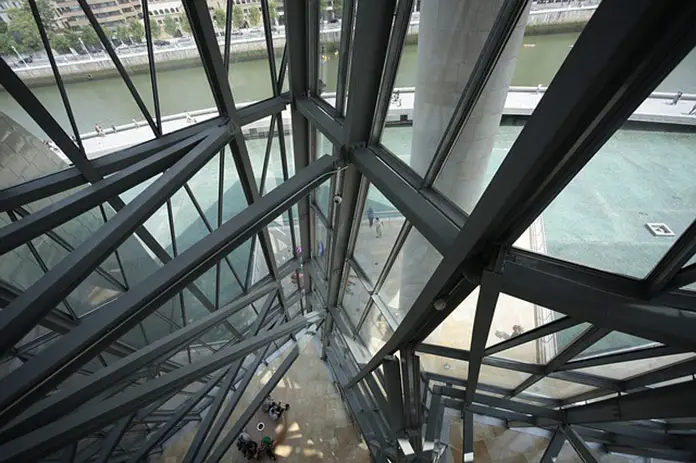
Inside of the museum formed around the atrium. In the atrium, curvilinear glass walls join with the sky ceiling. Thanks to this, the atrium that connects inside and outside became a bright and spacious place. There are 20 exhibition halls in this three-floor building. Ten of them have a classic diagonal plan. Also, some of the artworks exhibit outside as well. Maman (Louise Bourgeois), The Matter of Time (Richard Serra), Puppy (Jeff Koons), Installation for Bilbao (Jenny Holzer) are a few of the artworks that are exhibited in this museum.
Bilbao Effect
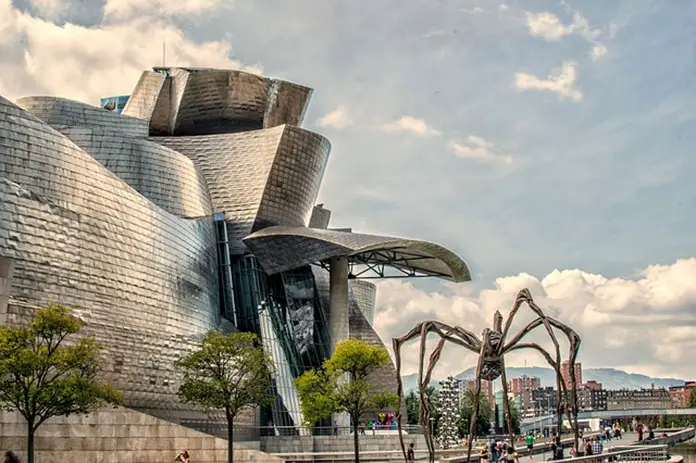
Before the opening of the Guggenheim Museum, Bilbao was just an industry town with economic troubles. However, after the museum, Bilbao became an important city for cultural tourism. The museum helped Bilbao’s economy and brought life to this ordinary Basque city. This transformation is known as Bilbao Effect. Furthermore, this situation has become an inspiration for other cities which want to improve in a similar way.






